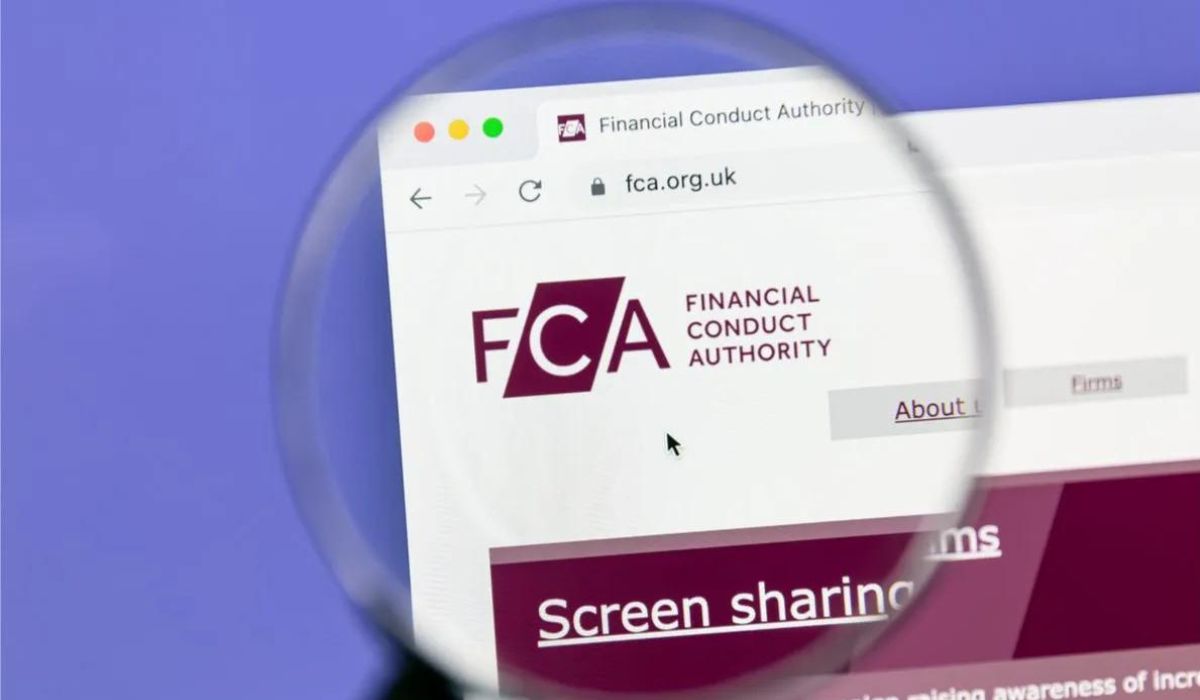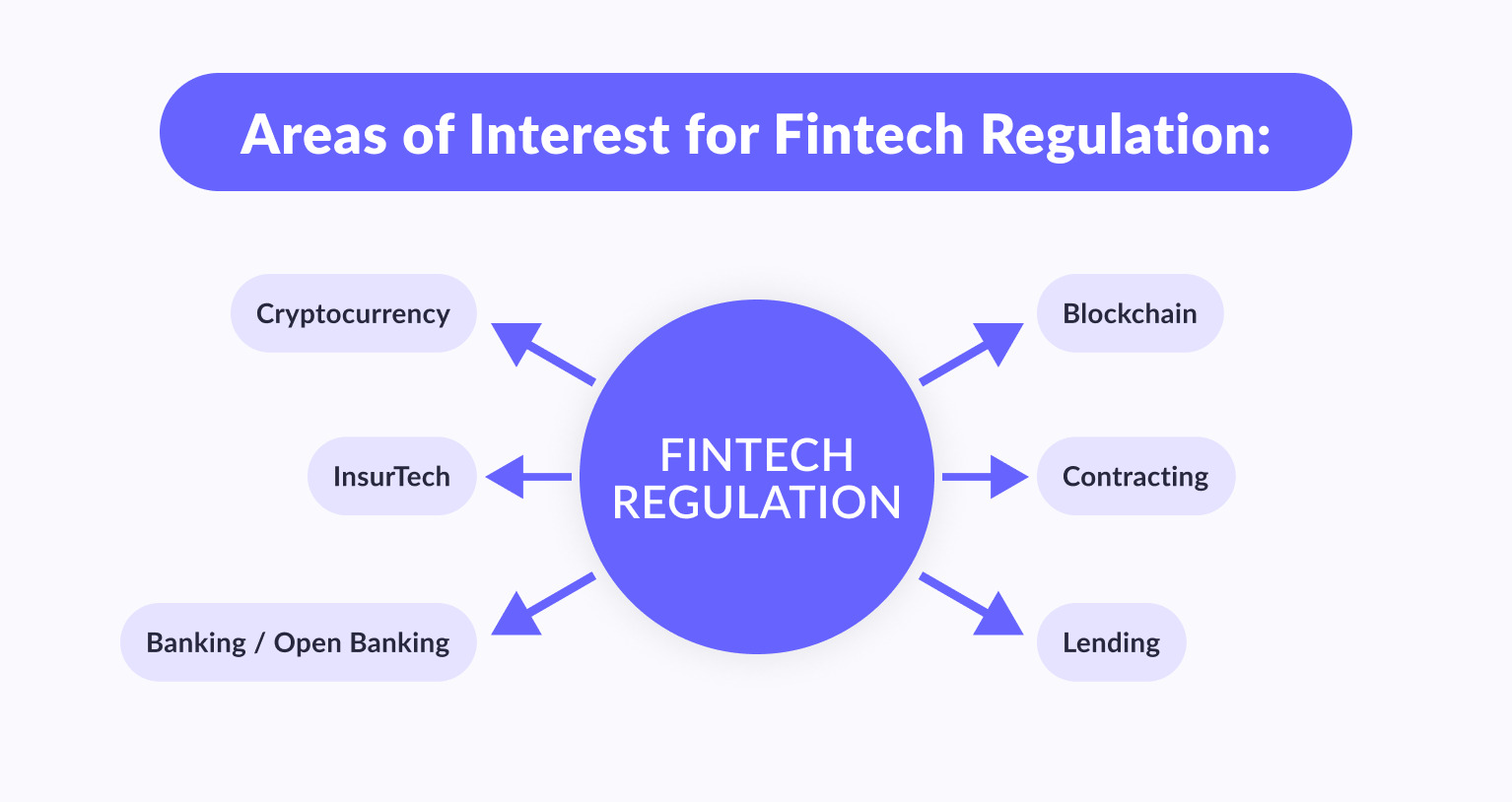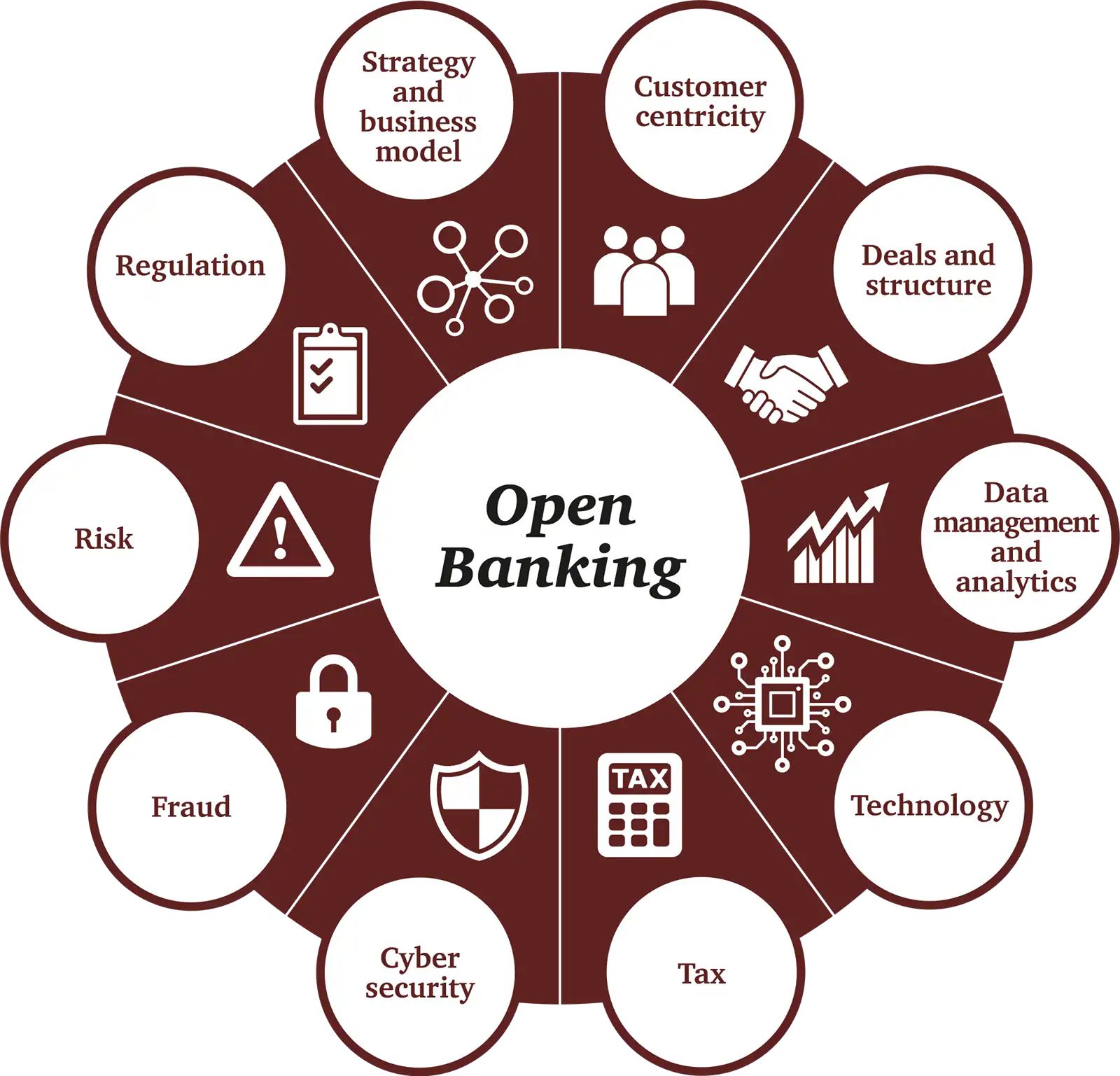Introduction
Welcome to the world of fintech innovation, where cutting-edge technology is revolutionizing the financial industry. As technology continues to advance at an unprecedented pace, financial regulators are faced with the challenge of keeping up with these developments while ensuring the protection of consumers and the stability of the financial system.
One way that regulators are addressing this challenge is through the introduction of fintech sandboxes. These sandboxes provide a controlled environment where fintech startups can test their innovative ideas and solutions with real users and data, while still being subject to regulatory oversight.
A fintech sandbox is essentially a framework that allows fintech companies to experiment and validate their products and services in a safe and regulated environment. It provides them with the opportunity to test their ideas, assess their viability, and identify any regulatory hurdles that may need to be addressed before launching their fintech solutions to a wider market.
The concept of a fintech sandbox originated from the recognition that traditional regulatory frameworks may not be well-suited to the rapidly evolving and disruptive nature of fintech innovations. By creating a sandbox, regulators aim to strike a balance between fostering innovation and protecting consumers, all while maintaining the stability and integrity of the financial system.
The Financial Conduct Authority (FCA), the regulatory body responsible for overseeing financial markets in the United Kingdom, has been at the forefront of promoting fintech innovation through the introduction of its own fintech sandbox.
In this article, we will explore the FCA’s fintech sandbox, its purpose, and the benefits it offers to both fintech companies and consumers. We will also delve into the history of the fintech sandbox, examining when and how the FCA introduced this innovative regulatory approach. So, let’s dive in and discover the world of the FCA fintech sandbox!
What is a fintech sandbox?
A fintech sandbox is a controlled environment that allows fintech companies to test and refine their innovative products, services, or business models in a real-world setting, under the supervision of regulatory authorities. It provides a platform where these companies can experiment with new ideas, technologies, and approaches, while still adhering to the necessary regulations and consumer protections.
In a traditional regulatory framework, fintech companies may face significant barriers and regulatory uncertainties when trying to bring their innovative ideas to market. These barriers can be particularly challenging for early-stage startups with limited resources. The fintech sandbox aims to address these challenges by creating a safe space for fintech companies to test their products and services within a supportive regulatory environment.
Typically, a fintech sandbox is established by a regulatory authority, such as a financial services regulator or central bank. The sandbox allows fintech companies to conduct live tests with real customers and data, enabling them to gather valuable insights and feedback to refine their offerings. By participating in a sandbox, fintech companies can validate their business models, identify potential risks and compliance requirements, and demonstrate their products’ viability to potential investors and partners.
It’s important to note that the fintech sandbox is not a free-for-all experimentation space. It is still subject to regulations and oversight, albeit with some flexibility to accommodate innovative ideas. The regulatory framework within the sandbox is designed to protect consumers and maintain the integrity of the financial system, while allowing fintech companies to push boundaries and drive innovation.
The specific features and requirements of a fintech sandbox can vary from one jurisdiction to another. Some sandboxes have a limited duration, usually ranging from a few months to a year, while others may allow companies to participate in ongoing testing. The eligibility criteria for participating in a fintech sandbox can also differ, with some sandboxes open to startups, established fintech companies, or even incumbent financial institutions.
The need for a fintech sandbox
The rapid advancements in technology have given rise to a wave of fintech innovation, disrupting traditional financial services and introducing new ways of doing business. However, this wave of innovation also brings about new challenges for regulators, as they try to strike a balance between fostering innovation and ensuring consumer protection and financial stability.
One of the key challenges that fintech companies face is navigating complex and rigid regulatory frameworks. Traditional regulations, often designed with traditional financial institutions in mind, may not adequately address the unique risks and opportunities presented by fintech. This can result in regulatory uncertainty and delays in bringing innovative solutions to market.
The need for a fintech sandbox arises from the recognition that a more flexible and adaptable approach is required to accommodate the dynamic nature of fintech innovations. By providing a controlled environment for testing and experimentation, a fintech sandbox allows regulators to gain insights into emerging technologies and business models, while also providing fintech companies with the necessary regulatory support and guidance.
Another crucial aspect of a fintech sandbox is its role in fostering collaboration between regulators, fintech companies, and other stakeholders. By bringing different players together in a collaborative setting, a sandbox facilitates the exchange of knowledge and expertise, promoting a deeper understanding of the challenges and opportunities in the fintech space. This collaboration can lead to the development of more effective and tailored regulatory approaches, benefiting both regulators and fintech innovators.
Moreover, a fintech sandbox serves as a valuable platform for regulators to assess the potential risks and implications of new technologies and business models. By closely monitoring the tests and experiments conducted within the sandbox, regulators can gain early insights into any potential risks and develop appropriate safeguards and regulations to protect consumers and maintain financial stability.
The need for a fintech sandbox is not limited to the fintech companies alone. Consumers also benefit from the existence of a sandbox, as it provides them with access to potentially innovative and beneficial financial products and services. By testing new solutions in a controlled environment, fintech companies can identify and address any consumer protection concerns before launching their offerings to the wider public.
In summary, the need for a fintech sandbox is driven by the challenges posed by traditional regulatory frameworks in accommodating the dynamic and disruptive nature of fintech innovation. It provides a solution that fosters innovation, collaboration, and consumer protection, creating a win-win situation for regulators, fintech companies, and consumers alike.
FCA’s role in promoting fintech innovation
The Financial Conduct Authority (FCA) plays a crucial role in promoting fintech innovation in the United Kingdom. As the regulatory body responsible for overseeing financial markets, the FCA recognizes the potential of fintech to drive positive change and enhance competition in the financial industry.
The FCA acknowledges that traditional regulatory frameworks may not be well-suited to the rapidly evolving nature of fintech innovations. In response to this, the FCA has actively embraced technology and innovation as part of its regulatory approach, striving to create an environment that fosters innovation while ensuring consumer protection and market integrity.
One of the key initiatives introduced by the FCA to promote fintech innovation is its fintech sandbox. Launched in 2016, the FCA sandbox provides a dedicated space where fintech companies can test their innovative products and services under the supervision of the regulatory authority. By participating in the sandbox, fintech companies can benefit from regulatory guidance, access to a network of industry experts, and the opportunity to test their solutions with real customers and data.
Moreover, the FCA actively engages with the fintech community through various initiatives, such as innovation hubs and regulatory sandboxes, besides the fintech sandbox. These initiatives provide a platform for fintech companies to interact with the FCA, seek regulatory guidance, and understand the regulatory requirements specific to their innovative solutions. This engagement helps foster a supportive regulatory environment that encourages fintech innovation while safeguarding consumer interests.
In addition to providing regulatory support, the FCA also promotes awareness and understanding of fintech innovations among consumers and market participants. It conducts research and publishes guidance on emerging fintech trends and risks, helping both consumers and the industry stay informed and make informed decisions.
The FCA’s role goes beyond promoting fintech innovation within the UK. It actively collaborates with international regulatory bodies and organizations to share knowledge and best practices in fintech regulation. This collaboration facilitates the development of global regulatory standards and helps create a conducive environment for cross-border fintech activities.
Furthermore, the FCA actively participates in industry consultations and seeks feedback from stakeholders, including fintech companies, to shape its regulatory approach. This proactive engagement ensures that the FCA keeps pace with the evolving fintech landscape, understands the challenges faced by market participants, and can adapt its regulatory frameworks accordingly.
In summary, the FCA plays a vital role in promoting fintech innovation by providing a supportive regulatory environment through initiatives such as the fintech sandbox. It actively engages with the fintech community, promotes consumer awareness, and collaborates with international regulatory bodies to foster innovation and drive positive change in the financial industry.
When did FCA introduce the fintech sandbox?
The Financial Conduct Authority (FCA) introduced its fintech sandbox in 2016, making it one of the early adopters of this innovative regulatory approach. The launch of the FCA sandbox reflected the regulatory body’s commitment to promoting fintech innovation and supporting the growth of the UK’s fintech ecosystem.
The decision to establish the fintech sandbox was driven by the recognition of the unique challenges faced by fintech companies in navigating the regulatory landscape. Traditional regulatory frameworks often prove to be a barrier for fintech startups, particularly those with innovative business models or products that do not fit neatly within existing regulatory categories.
The FCA’s fintech sandbox was designed to address these challenges by providing a safe space for fintech companies to test their solutions and receive regulatory guidance. By facilitating close collaboration between regulators and fintech innovators, the sandbox aimed to enable timely feedback and help fintech companies navigate the regulatory requirements more effectively.
Since its launch, the FCA fintech sandbox has gained significant recognition and has become a cornerstone of the UK’s fintech ecosystem. It has helped position the UK as a global hub for fintech innovation, attracting fintech startups from around the world to test their ideas in a supportive regulatory environment.
Each year, the FCA opens applications for companies to participate in the sandbox. The application process involves submitting a proposal outlining the intended tests, the benefits to consumers, and the regulatory implications. Successful applicants are then given the opportunity to conduct live tests within the sandbox, under the supervision and guidance of the FCA.
Over the years, the FCA has expanded and evolved its fintech sandbox to better meet the needs of market participants. It introduced a “permanent sandbox cohort” in 2019, which allows firms with innovative business models to test their solutions for a longer period. This addresses the needs of companies requiring more time to test and gather data to demonstrate the viability of their innovations.
In addition to the UK fintech sandbox, the FCA has also collaborated with international regulators to establish global fintech sandbox initiatives. These initiatives aim to promote cross-border fintech testing and harmonize regulatory approaches across jurisdictions, fostering innovation and growth in the global fintech landscape.
In summary, the FCA introduced its fintech sandbox in 2016 to address the unique challenges faced by fintech companies in navigating traditional regulatory frameworks. Since its launch, the FCA sandbox has played a significant role in promoting fintech innovation in the UK and has been regarded as a valuable model for other jurisdictions.
How does the fintech sandbox work?
The fintech sandbox introduced by the Financial Conduct Authority (FCA) operates on a principle of providing a controlled testing environment for fintech companies to validate their innovative products, services, or business models. It allows these companies to test their solutions with real customers, data, and market conditions while being subject to regulatory oversight. Here’s an overview of how the fintech sandbox works:
1. Application process: Fintech companies interested in participating in the FCA sandbox need to submit an application outlining their proposed tests, the potential benefits to consumers, and the regulatory implications. The FCA carefully reviews the applications and selects a cohort of companies to participate in the sandbox based on various criteria, such as the level of innovation and consumer benefit provided by the solution.
2. Testing phase: Once selected, the participating companies are granted a defined testing period within the sandbox to conduct live tests of their solutions. During this phase, they can interact with real customers, collect data, and refine their offerings based on user feedback. The sandbox provides a controlled environment where the companies can experiment and learn from the outcomes of their tests.
3. Regulatory support: The FCA provides regulatory support and guidance throughout the testing phase. The participating companies have access to a dedicated team of experts within the FCA who help navigate the regulatory requirements and address any compliance challenges that may arise during the testing process.
4. Consumer safeguards: Despite the experimental nature of the sandbox, consumer protection remains a priority. The FCA sets certain safeguards to ensure that participating companies uphold the necessary standards of consumer protection. This may include restrictions on the number of users, the volume of transactions, or the nature of the products or services being tested.
5. Data collection and reporting: Throughout the testing phase, the participating companies are required to collect and analyze data to evaluate the performance, risks, and potential market impact of their solutions. The FCA encourages companies to share their findings and experiences, providing valuable insights to both the FCA and the wider industry.
6. Regulatory feedback: One of the key benefits of the fintech sandbox is the feedback loop between the FCA and the participating companies. The FCA reviews the progress of the tests and provides feedback on the regulatory implications and any potential concerns or risks observed. This helps the companies refine their solutions, address compliance issues, and ensure they meet the necessary regulatory requirements.
7. Exit strategy: At the end of the testing phase, the participating companies need to develop an exit strategy outlining how they plan to comply with regulatory requirements when exiting the sandbox. This ensures that the solutions can be brought to market in a compliant manner, while minimizing any potential disruption to consumers or the financial system.
It’s important to note that the fintech sandbox is not a one-size-fits-all approach. The specific features and requirements of the sandbox may vary based on the regulatory framework and jurisdiction. The FCA continuously evaluates and evolves its sandbox, taking into account the learnings from each cohort and incorporating industry feedback to improve the program.
In summary, the fintech sandbox operates as a supportive and controlled testing environment for fintech companies. It provides an opportunity for innovation, regulatory guidance, consumer protection, and market education, ensuring that innovative fintech solutions can be developed in a responsible and compliant manner.
Benefits of the fintech sandbox
The fintech sandbox introduced by the Financial Conduct Authority (FCA) offers various benefits to both fintech companies and the wider financial ecosystem. Let’s explore some of the key benefits provided by the fintech sandbox:
1. Regulatory support: Fintech companies often face challenges in understanding and navigating complex regulatory frameworks. The fintech sandbox provides these companies with direct access to the expertise and guidance of regulatory authorities, such as the FCA. This support helps fintech companies ensure compliance with regulations and discover innovative ways to address any regulatory concerns early in the development and testing stages.
2. Reduced time-to-market: The traditional route to market for fintech solutions can involve lengthy approval processes and regulatory reviews. The fintech sandbox streamlines this process by providing a dedicated testing environment where companies can validate their solutions in a shorter time frame. This reduces time-to-market, allowing fintech innovators to bring their products and services to market more quickly, gaining a competitive advantage.
3. Consumer protection: The fintech sandbox places consumer protection at the forefront of the testing process. Participating companies must adhere to specific safeguards to ensure that consumer interests are safeguarded while testing innovative solutions. This focus on consumer protection helps build trust in the fintech industry and ensures that users’ rights and data privacy are respected throughout the testing phase.
4. Real-world testing: The fintech sandbox provides an opportunity for fintech companies to test their solutions in a real-world environment. They can engage with real customers, gather valuable insights, and refine their offerings based on user feedback. This helps companies to better understand market demand, improve user experience, and develop products and services that meet the evolving needs of consumers.
5. Collaboration and networking: The fintech sandbox fosters collaboration and networking among participating companies, regulators, and industry experts. This collaborative environment allows fintech companies to share knowledge, experiences, and best practices. The interactions within the sandbox enable companies to build valuable connections, develop partnerships, and gain exposure to potential investors and customers.
6. Market validation and investor confidence: Fintech companies that have successfully participated in the fintech sandbox gain market validation and credibility. The endorsement from regulatory authorities increases investor confidence, making it easier for these companies to attract funding and forge strategic partnerships. The sandbox experience acts as a stamp of approval that validates the viability and potential of their solutions.
7. Learning opportunities: The fintech sandbox offers valuable learning opportunities for both participating companies and regulatory bodies. Fintech companies can gain insights into the regulatory landscape, understand compliance requirements, and improve their understanding of market dynamics. Regulatory authorities benefit from the knowledge gained through monitoring and evaluating the tests, which contributes to the development of more effective and tailored regulatory frameworks.
8. Innovation ecosystem development: The fintech sandbox plays a crucial role in nurturing the broader fintech ecosystem. By supporting and promoting fintech innovation, the sandbox attracts talent, investment, and innovative ideas to the sector. This, in turn, helps in building a thriving ecosystem that fosters collaboration, economic growth, and the development of new technological solutions.
In summary, the fintech sandbox offers a range of benefits, including regulatory support, reduced time-to-market, consumer protection, real-world testing, collaboration opportunities, market validation, learning opportunities, and the development of a vibrant innovation ecosystem. These benefits collectively contribute to the growth and development of the fintech sector, driving innovation and benefiting consumers and the wider financial industry as a whole.
Success stories from the fintech sandbox
The fintech sandbox introduced by the Financial Conduct Authority (FCA) has been instrumental in unlocking innovation and fostering the growth of the fintech sector. Numerous success stories have emerged from the sandbox, showcasing the value and impact of this regulatory initiative. Let’s explore some notable success stories:
1. Cuvva: Cuvva, a UK-based insurtech startup, participated in the fintech sandbox to test its innovative pay-as-you-go car insurance solution. By leveraging telematics and mobile technology, Cuvva aimed to offer flexible and affordable insurance coverage to infrequent drivers. The sandbox provided regulatory guidance and consumer feedback, enabling Cuvva to refine their product. Today, Cuvva has successfully launched its car insurance product and has expanded into other insurance verticals.
2. Flux: Flux, a London-based fintech startup, used the fintech sandbox to test its digital receipt technology. Flux integrated with point-of-sale systems to automatically generate digital receipts for customers, simplifying expense tracking and providing personalized offers. The sandbox allowed Flux to validate its solution, assess regulatory implications, and ensure data privacy and security. Following its participation in the sandbox, Flux has partnered with major retailers and secured funding to expand its services.
3. Onfido: Onfido, a digital identity verification provider, utilized the fintech sandbox to test its remote identity verification solution. Onfido’s technology enables seamless and secure customer onboarding by utilizing AI and machine learning algorithms. The sandbox provided Onfido with an opportunity to validate its technology and address regulatory concerns related to identity verification and data protection. Today, Onfido is a global leader in its industry, serving reputable clients across various sectors.
4. Nivaura: Nivaura, a fintech company specializing in capital markets automation, participated in the fintech sandbox to test its blockchain-based platform for issuing and managing financial instruments. The sandbox allowed Nivaura to navigate the complex regulatory landscape and assess the implications of its solution. Following the sandbox, Nivaura successfully conducted multiple bond issuance trials and expanded its platform to support a wider range of capital markets instruments.
5. Moneybox: Moneybox, an investment app aimed at millennials, joined the fintech sandbox to test its mobile investment platform. The app enables users to effortlessly invest their spare change and make regular contributions to investment portfolios. The sandbox provided Moneybox with regulatory support and helped address compliance challenges associated with investment services. Moneybox has since grown significantly, attracting millions of users and receiving substantial investment to expand its offering.
These success stories highlight the transformative impact of the fintech sandbox on the growth and development of fintech companies. By providing a supportive testing environment coupled with regulatory guidance, the sandbox has empowered these companies to innovate, validate their solutions, and navigate regulatory complexities. These success stories demonstrate how the sandbox has helped fintech startups evolve into successful businesses, contributing to the diversification and modernization of the financial industry.
It is worth noting that these success stories are just a glimpse of the many transformative ventures that have emerged from the fintech sandbox. The sandbox continues to provide a platform for fintech companies to experiment, iterate, and bring innovative solutions to market, driving further advancements in the fintech landscape.
Challenges and criticisms of the fintech sandbox
While the fintech sandbox introduced by the Financial Conduct Authority (FCA) has proven to be a valuable initiative in fostering innovation, there are also challenges and criticisms associated with its implementation. Let’s explore some of the key challenges and criticisms of the fintech sandbox:
1. Limited access: One of the criticisms of the fintech sandbox is that its access may be limited to a select number of companies. Given the popularity and demand for participation, the FCA receives a large number of applications for the sandbox. However, only a limited number of companies can be accommodated in each cohort, creating a potential barrier for smaller or less-established fintech startups to participate.
2. Complexity of regulatory compliance: While the sandbox aims to provide regulatory support and guidance, some fintech companies still find it challenging to navigate the complex regulatory landscape. The regulatory requirements can be intricate, and the sandbox participation may not fully alleviate all compliance burdens. Startups may still need to engage legal and compliance experts to ensure adherence to the necessary regulations, resulting in additional costs and resources.
3. Limited testing timeframe: The duration of the testing phase within the fintech sandbox is typically limited, ranging from a few months to a year. Some critics argue that this timeframe may not be sufficient for fintech companies to adequately validate their solutions, especially if the development and testing of complex technologies require a longer period. The time constraint may restrict the ability to collect comprehensive data and fully assess the viability and potential risks of the solutions being tested.
4. Consumer protection concerns: While the fintech sandbox places a strong emphasis on consumer protection, there are concerns that the testing phase may expose consumers to certain risks. Despite the safeguards implemented within the sandbox, some argue that testing new and unproven financial products or services could potentially harm consumers if not adequately monitored or regulated. Striking the right balance between innovation and protecting consumers remains a challenge.
5. Scalability and commercialization: Transitioning from the sandbox to full-scale commercialization can present challenges for fintech companies. Some critics argue that the sandbox may not adequately address the issues and requirements that arise when a successful test solution moves into a live operational environment. Companies may face scaling challenges, complexities in integrating with existing financial systems, and the need to comply with additional regulatory obligations for market entry.
6. International harmonization: As fintech is a global phenomenon, critics point out the need for harmonization and coordination between different jurisdictions’ sandbox initiatives. The absence of a unified regulatory approach may create challenges for fintech companies operating in multiple markets. Collaborative efforts between regulatory authorities are crucial to address cross-border issues and facilitate global innovation.
It is important to note that while these challenges and criticisms exist, the fintech sandbox is an evolving initiative. The FCA and other regulatory bodies are actively learning, adapting, and refining the sandbox model to overcome these challenges. The feedback received from participants and industry stakeholders is instrumental in shaping the future of regulatory sandboxes and addressing the identified concerns.
Overall, the fintech sandbox continues to be a valuable tool in fostering innovation and balancing regulatory oversight in the rapidly evolving fintech landscape. Addressing the challenges and criticisms will be essential to ensure the ongoing success and effectiveness of the sandbox model as it adapts to changing market dynamics and technological advancements.
Conclusion
The fintech sandbox introduced by the Financial Conduct Authority (FCA) has emerged as a powerful catalyst for fintech innovation, offering a controlled environment for companies to test and refine their disruptive ideas. It has played a pivotal role in promoting collaboration between fintech startups and regulatory bodies, facilitating the development of innovative solutions while ensuring consumer protection and market integrity.
Through the fintech sandbox, the FCA has been at the forefront of embracing technology and fostering a supportive regulatory environment for fintech companies. The sandbox has reduced barriers to entry, accelerated time-to-market, and provided crucial regulatory support, enabling fintech startups to bring their cutting-edge solutions to consumers more efficiently.
Success stories from the fintech sandbox demonstrate its impact in transforming the financial industry. Fintech companies have leveraged the sandbox to validate their solutions, gain consumer trust, secure funding, and expand their operations. The sandbox has proven instrumental in fostering a culture of innovation, attracting investment, and creating a vibrant fintech ecosystem.
However, the fintech sandbox also faces challenges and criticisms. Limited access, complexity of regulatory compliance, and concerns around consumer protection and scalability are areas that need to be addressed for continued improvement. Moreover, coordination and harmonization of sandbox initiatives across jurisdictions will be crucial to support cross-border fintech activities.
Looking ahead, the fintech sandbox model will continue to evolve and adapt to meet the ever-changing fintech landscape. Regulatory authorities, such as the FCA, are learning from the experiences and feedback of participants and industry stakeholders, refining the sandbox model to address challenges and enhance its effectiveness.
The fintech sandbox has undoubtedly made significant contributions to driving fintech innovation, promoting collaboration, and ensuring regulatory compliance. As the world of fintech continues to evolve, regulatory sandboxes provide a valuable framework for regulators to support the development of groundbreaking solutions, shape future regulatory frameworks, and embrace the transformative potential of technology in the financial industry.
Through ongoing collaboration and adaptation, the fintech sandbox will remain an essential tool for fostering innovation, protecting consumers, and nurturing the growth of the fintech ecosystem. It symbolizes the commitment of regulatory bodies to strike a balance between innovation and regulation, shaping the future of finance for the benefit of individuals, businesses, and society as a whole.

























